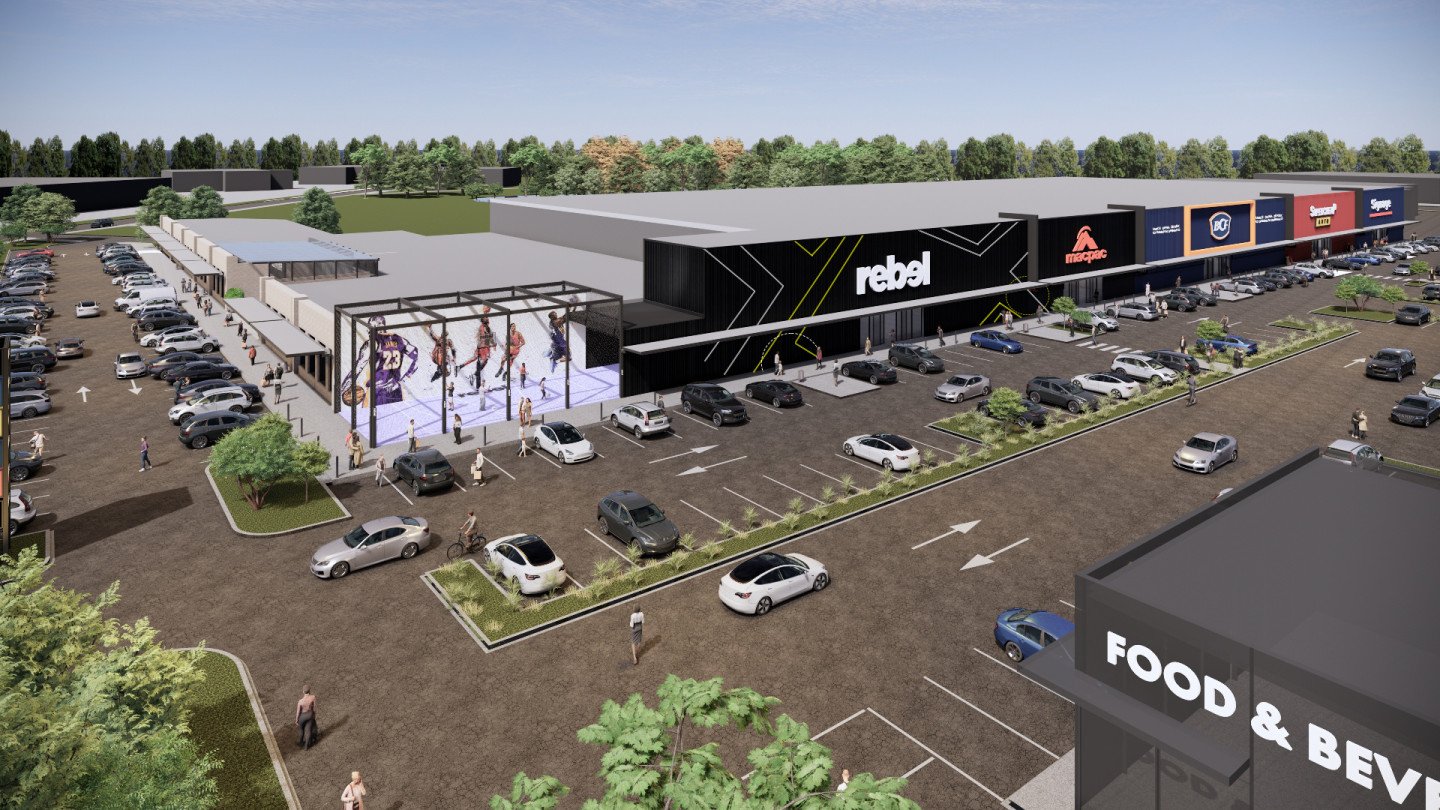Hames Sharley, in collaboration with BWP Property Group, is proud to announce the revitalisation of Fountain Gate Central, a next-generation retail and lifestyle precinct that redefines the future of adaptive reuse in Australia’s large-format retail sector.
The project will remix, subdivide and extend the existing 11,000 sqm building to deliver a reinvigorated total Gross Floor Area of 14,300 sqm.
The redevelopment introduces a more diverse mix of uses including a gym, allied-health services, showroom retail, and enhanced dining and lifestyle offerings supported by 425 car spaces, 4 EV-charging bays, and 24 bicycle parking spaces.
A new chapter in adaptive reuse
At its core, the Fountain Gate Central transformation demonstrates how intelligent reuse can unlock value environmentally, socially and commercially.
Building on insights from Hames Sharley’s national R2D Adaptive Reuse and Carbon Benchmarking Study, the project achieves up to 50 per cent embodied-carbon reduction compared with a conventional new-build outcome.
By retaining and optimising much of the existing structure, the design avoids demolition waste, reduces embodied emissions, and accelerates delivery resulting in strong return-on-cost performance amidst challenging construction conditions.
“Fountain Gate Central proves that adaptive reuse is not just a sustainability strategy but a sound business decision,” said Hames Sharley Principal, Rob Corcoran.
“By working with the existing building fabric, we’ve unlocked a flexible, lower-carbon asset that will continue to evolve with the community and the market.”

Engineered for net-zero capability
The redevelopment is future-proofed to enable near-net-zero-carbon operation, integrating a suite of high-performance Environmentally Sustainable Design (ESD) initiatives across energy, water, materials, transport, and indoor-environment quality.
Energy
- 100 % electric operation - no natural-gas connection.
- ≈693 kW solar-PV array (7 × 99 kW systems) with battery-storage integration to manage peak demand and grid independence.
- NCC 2022-compliant insulation with high-efficiency heat-pump HVAC and electric storage hot-water units.
- Lighting within BCA 2022 density limits, with daylight and motion sensors for efficiency.
Water
- 50,000 L rainwater-harvesting system supplying all toilets and supporting stormwater-quality management.
- 4-star toilets, 4-star bathroom taps, and 5-star kitchen fittings.
- Drought-tolerant, low-irrigation landscape design.
Indoor Environment Quality (IEQ)
- Low-VOC paints, adhesives and carpets; low-formaldehyde materials.
- Mechanical ventilation exceeding AS 1668.2 by > 50 %, maintaining CO₂ levels < 800 ppm.
- Glazing with ≥ 40 % Visible Light Transmittance for natural daylight access.
Sustainable materials
- Use of low-embodied-carbon concrete and recycled-content materials wherever feasible.
Sustainable transport
- 24 bicycle spaces in accessible locations.
- 4 EV-ready bays wired for expansion with 30-32 Amp circuitry.
Urban ecology
- Light-to-medium coloured roofing and paving mitigating the Urban-Heat-Island effect.
- Increased canopy and biodiversity through native landscape planting.

Design that performs financially and environmentally
The Fountain Gate Central redevelopment exemplifies how design innovation, sustainability and commercial viability can coexist.
By remixing existing infrastructure and focusing investment where it delivers the most impact, the project realises lower construction intensity, shorter program duration, and stronger lifecycle value.
“This project positions our portfolio for the future,” said a Ben Evans, National Development Manager, BWP Property Group.
“It’s a resilient, low-carbon retail asset that aligns with customer expectations, operational performance, and our long-term investment horizon.”
With an estimated 50% lower embodied carbon than a typical retail building, the 14,300 sqm project achieves a reduction of around 5,934 t CO₂e. Based on the RAC’s conservative estimate of 2.5 tonnes of CO₂ per Australian car per year, this saving is equivalent to the annual emissions of over 1,480 cars left running 24/7 for an entire year.
